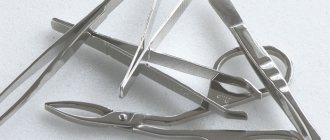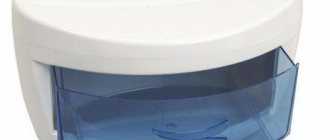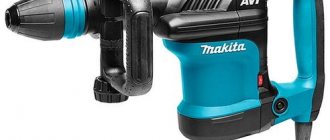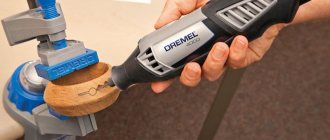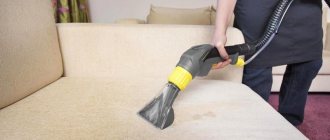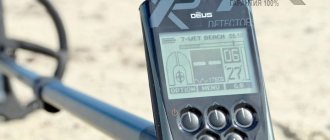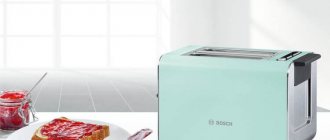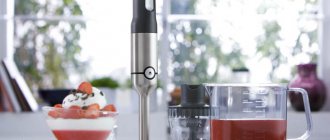Manicure services are provided by beauty salons, nail bars and individual masters. But such a familiar service can be dangerous. If the master has not sterilized the instruments well enough, then a fungal infection may be added to the fashionable nail design.
In order to ensure safe work, the master must use a working and high-quality sterilizer and conscientiously follow all the rules for sterilizing instruments. Nowadays, dry-heat ovens are becoming increasingly popular among sterilizers.
Purpose and principle of operation of the dry-heat oven
A dry-heat cabinet for manicure instruments is a sterilization device that cleans instruments using dry steam. It is designed to destroy microorganisms from the surface of metal and glass objects. Dry-heat ovens were the first to be appreciated by doctors, who use them to sterilize instruments that have been in contact with the blood of patients.
Later, aesthetic medicine clinics began to use this sterilizer, and then it began to be used in beauty and nail salons. The dry-heat oven is a heat-resistant chamber equipped with a heating element and stainless steel trays for placing sterilized instruments.
Modern dry-heat ovens have a display that allows you to adjust the temperature and sterilization mode.
In order to sterilize manicure instruments in dry heat, you need to pre-treat them with a disinfectant. Then place them in trays inside the sterilizer. For some types of dry-heat ovens, it is necessary to pre-seal the tools in a craft bag.
Next, you need to close the sterilizer lid and select the processing mode on the display. Once turned on, the heating element inside the cabinet circulates hot air, which destroys all microorganisms that survived disinfection.
What is a dry heat oven
A dry-heat cabinet, or as it is also called a dry-heat or thermal sterilizer, is used in beauty salons and medical institutions to treat instruments in order to get rid of germs and bacteria. The principle of its operation is based on processing products with dry air at a temperature of 180-200 degrees. It gained popularity due to its low cost, unlike autoclaves.
The thermosterilizer consists of a chamber where the process itself is carried out, and there is also a heating element inside. Inside the chamber there are gratings where bags with products that need sterilization are placed. This equipment also has a special panel where you can adjust the temperature and processing time of products. Thanks to special ventilation, the cabinet inside and all the tools in it are quickly heated.
If you process products at a temperature of 160 degrees, then the process should last at least two hours, at a temperature of 180 degrees one hour will be enough, and for the process to take half an hour, then the temperature should be 200 degrees.
Kinds
There are several types of processing of medical, manicure and cosmetic instruments:
| Type of processing | Principle of sterilization |
| Ball | Cleaning occurs by immersing the instruments for ten seconds in a flask filled with quartz balls heated over 220 degrees. |
| Glasperlen | Sterilization is carried out with glasperlene balls heated to a temperature of over 100 degrees. The tool is lowered there for 10-30 seconds. |
| Ultrasonic | Cleaning occurs due to a special solution that bubbles from ultrasonic waves and the bursting bubbles destroy all microorganisms. |
| UV | Cleaning is carried out using UV rays that destroy bacteria, viruses, fungi and other pathogens. Essentially, it is a disinfectant. |
| Air-steam | Sterilization occurs due to the circulation of hot air or steam. The temperature can vary from 135 degrees for steam to 260 degrees for dry air. |
Among the air-steam sterilizers, there are an autoclave and a dry-heat oven. An autoclave is more expensive, but allows you to quickly sterilize various instruments due to treatment with 135-degree steam. A dry-heat oven is cheaper, but it only processes metal tools with dry steam . The high temperature of the dry heat can damage the plastic or fabric.
How to use?
How to properly sterilize manicure instruments in a salon? This procedure is simple and convenient. The stages of sterilization of manicure instruments are as follows:
- Tools need to be placed in the cabinet.
- When turned on, the sterilizer heats up to the desired temperature: standard is 160-180 degrees, but can reach up to 260 degrees.
- The devices are sterilized in the cabinet for 1-2 hours. The time depends on the selected mode.
- If the instruments are placed in packaging, they can be used for 3 days. Without it, the devices must be used immediately. The packaging can be moisture-resistant, impervious paper.
It is necessary to follow these rules for sterilizing manicure instruments. After treatment, the devices will be completely safe. Equipment for beauty salons and home use a similar principle of operation. You must follow the safety rules presented in the instructions. Depending on the manufacturer, there may be some differences in the operation of the device.
Flaws
But dry heat sterilizers also have disadvantages:
- Duration of the sterilization process.
- The need to follow the rules for loading tools to ensure access to hot air.
- Suitable for use with metal and glass instruments only.
Instructions for sterilizing manicure instruments in a dry-heat oven
The dry-heat cabinet for manicure instruments must be used as described in the instructions.
Depending on the model of the device, some nuances of operation may vary, but the general rules are the same for all devices:
- First, the instruments must be placed in a disinfectant solution. The processing time and dilution method are indicated in the instructions for the disinfector.
- After disinfection, it is necessary to rinse the instruments in running water with a brush or rag.
- Next, you need to conduct a test for hidden blood by wiping the working surface of the instrument with a reagent. If the reaction does not occur, then you should rinse the instrument and proceed to the next step. If the reagent has changed color, you must return to step 1.
Air-steam type of treatment for manicure tools. - Cleaned instruments must be dried on a cloth, which must also be regularly subjected to special treatment.
- Dried instruments are sealed in a special craft bag with a gray sticker attached to it. In addition, the craft package must indicate what instrument is inside, the date of its sterilization and the name of the person in charge. All notes on the craft bag are made before the tools are placed in it. If you sign it after the instrument has been removed and sealed, there is a risk of damaging the package and breaking its seal.
- The dry-heat oven heats up to 180 degrees.
- Kraft bags with contents are placed in trays inside the sterilizer.
- After the lid of the dry-heat cabinet is closed, you can set the time and processing mode on the display.
- After processing is completed, the Kraft bags are removed from the dry heat, but are not opened.
- The gray sticker changed color and turned brown. This is an indication that the contents of this craft package were sterilized in dry heat.
- The craft bag is opened in front of the client. This guarantees and demonstrates the sterility of manicure instruments.
In a closed package, sterility is maintained for a month.
What is a tendon
A dry-heat oven is an electric air sterilizer designed for processing instruments using hot steam.
The temperature in the dry heat is set from 160 to 220 degrees, which allows you to destroy harmful bacteria and dangerous microorganisms. Dry steam treatment is the final stage of instrument sterilization and cannot be used as the only method.
Dry heat is used for processing manicure instruments, in dental offices, tattoo parlors and medical institutions.
How and with what to disinfect, sterilize and clean manicure instruments
The processing time in a dry-heat oven depends on the temperature:
- At an indicator of 180-220 degrees – sterilization time is 30 minutes;
- From 170 to 180 – 60 minutes;
- 160-170 degrees – 150 minutes.
These indicators are averaged and may vary slightly depending on the specific model of the device. Before use, read the instructions and follow the manufacturer's recommendations.
Instruments in a dry-heat oven can be sterilized:
- Opened - on a tray or tray. In this case, the devices must be used immediately after treatment;
- Unopened - in special craft bags. Paper bags without impregnation allow you to store instruments after sterilization from 3 to 20 days, depending on the type. The packaging is opened immediately before the start of the procedure.
Advantages
- High-quality processing of the entire tool;
- Relative safety for metal tools;
- Ease of maintenance of the device. Sukhozhar does not require careful care. To maintain cleanliness, you only need to occasionally wipe it from the outside with an alcohol or disinfectant solution;
- Availability. Prices for dry roast start from 2,500 rubles. This allows you to purchase a cabinet even for home use;
Flaws
- Long full cycle. In the dry heat, instruments are sterilized for 30 to 150 minutes;
- Not suitable for all instruments - utensils made of glass, metal or porcelain are suitable for processing with dry hot air.
Device selection criteria
A dry-heat cabinet for manicure instruments is required by salons, nail bars, and professionals working at home.
They all choose sterilizers based on 5 main criteria:
- Degree of disinfection. Does the sterilizer destroy all pathogens and their spores? The higher the instrument processing temperature, the higher the level of disinfection. The leader in this indicator is a dry heat sterilizer. Second place is shared between ball and glasperlene.
Glasperlene sterilizer disinfects faster than a dry-heat oven for manicure instruments. - Sterilization speed . This criterion is important for manicure salons with a constant flow of clients. The less time spent on sterilization, the faster you can start working with the next client. Here, the dry-heat oven does not show very good results, since it takes 60 minutes to completely sterilize the instruments. For comparison, a Glasperlene sterilizer does the job in 10 seconds. But this is not a reason to give up dry heat. In beauty salons with high traffic, the master uses several sets of tools. And while one set is sterilized, you can work with the other. Craftsmen who work from home, as a rule, do not work with a continuous flow of clients.
- Intuitive interface or ease of use of the sterilizer . The simpler the sterilization process is, the fewer mistakes will be made.
- Size and number of tools processed at a time . These are proportional indicators. The larger the sterilizer, the more instruments can be loaded into it at one time. But “more” does not mean “better”. For large salons with a large flow of clients, a large sterilizer is indeed useful. It will allow you to avoid creating queues and process all the necessary tools at once. But craftsmen working at home don’t need a large sterilizer. They won’t accumulate so many tools even in one day. In addition, home workers, as a rule, do not have space to place a large sterilizer. It is better for them to choose more compact models.
- Price . It may depend not only on the actual characteristics of the sterilizer, but also on the retail markup and the manufacturer’s brand.
Which sterilizer to choose: review of popular models
When choosing a sterilizer for manicure instruments, it is important to understand where and how it will be used. Craftsmen working at home prefer to use compact and inexpensive sterilizers. Large beauty salons are not limited in funds, so they can afford expensive and spacious models.
Compact sterilizers
The most compact sterilizers are ball and glasperlene. They are the fastest. However, they are quite expensive and require regular replacement of the balls. But even among such sterilizers there are budget models. For example, Macrostop Silverfox. This is a small glasperlene sterilizer. Its dimensions: 17 cm in height and 16 cm in diameter. Heats up to 250 degrees.
In this temperature mode, 15–20 seconds are enough to completely sterilize the instrument. Ultrasonic sterilizers seem more cumbersome at first. But since they combine the functions of a sterilizer and a disinfector, they really save space, since one is used instead of two devices.
But you have to pay extra for 2 in 1 functions. Ultrasonic sterilizers are the most expensive on the market. A relatively affordable model is the Donfeel HB-382 ultrasonic sterilizer. It will cost almost twice as much as Macrostop Silverfox. Ultrasound operates at room temperature. Dimensions of the device: base with a diameter of about 20 cm and height 13 cm.
A dry-heat cabinet for manicure tools can be compact. For example, the TNL PROFESSIONAL model is a box with a base of 31*14 cm and a height of less than 20 cm. Despite its modest size, this dry heater is quite powerful: it can heat up to 200 degrees and maintain this temperature for 2 hours.
This is more than enough to destroy any known microorganisms. But this device also has disadvantages. Due to the small size of the sterilizer, you cannot put a craft bag in it, since this bag will come into contact with the heating elements of the device and will simply burn out, the seal will be broken.
Therefore, instruments in TNL PROFESSIONAL are sterilized without a craft bag; they are simply loaded into the sterilizer tray.
Therefore, in order not to compromise the sterility of the instruments, they will have to be stored directly in the sterilizer until the next use. The WILSON PS-3401 dry-heat oven from Irisk Professional is slightly taller and wider. It can also heat up to 200 degrees, but the timer allows you to keep this temperature only for up to one hour.
This fully complies with sterilization standards. Tools are loaded into this dry heat in craft bags. But it is recommended to tuck the edges of the bag as much as possible to prevent it from coming into contact with the heating elements of the sterilizer and to avoid charring of the Kraft bag.
The dry heat sterilizer model CH-360T is the same in size as the TNL PROFESSIONAL, but the maximum temperature of the CH-360T is higher - it is 220 degrees, and the maximum operating time is 1 hour. Treats instruments in a craft bag with dry air, which allows them to remain sterile for a month after removing the bag from the dry heater.
In addition to the plastic handle on the lid, it also has a wooden handle on the side. It does not heat up and allows you to move the dryer immediately after finishing work. The msd-218 cabinet, like the CH-360T, is a box measuring 31*14*18 cm. It also heats up to 220 degrees, but the timer can be set for 2 hours. Allows you to sterilize instruments both in a craft bag and without it.
The side handle of this sterilizer is made of metal and can heat up during operation. This makes the msd-218 significantly less mobile than the CH-360T. The dryer NV-210 is similar in characteristics to the msd-218, but does not have a side handle.
Among autoclaves it is difficult to find a compact model. It's worth paying attention to Sanity Security. This small Italian-made autoclave weighs only 6 kg with a working chamber volume of 2.5 liters. Its dimensions are 43*30*29 cm. It heats the steam to 250 degrees and processes the tools for half an hour. Although its mechanical timer can be set for 1 hour.
Capacious sterilizers
If the size of the room allows, then you can take larger sterilizers. This will allow you to process more tools at once. Such sterilizers allow you to safely place craft bags inside without fear that they will come into contact with heating elements.
The domestic device “GP-10 MO Air Sterilizer” has proven itself to be high-quality, convenient and inexpensive. It is relatively small - only 42 cm in height, base - 44*45 cm. The operating temperature of the sterilizer is from 50 to 200 degrees . The operating time can be set up to 17 hours.
It needs about half an hour to warm up to 180 degrees, necessary for high-quality sterilization. There is no forced cooling in this device, but there is an emergency shutdown system when overheating above 210 degrees. There are 3 standard operating modes and the ability to adjust parameters arbitrarily.
This sterilizer is used for processing medical instruments, but it is also suitable for manicure instruments.
Another domestic dry heat sterilizer is GP-20-Oh PZ. Unlike its younger brother, it is somewhat larger: 58 * 54 cm at the base and 55 cm in height, but at the same time the volume inside is twice as large - 20 liters. It has a forced cooling system that can operate without supplying cold air from outside. But its heating time is longer and its price is higher.
Models of a number of GPs come in 40 and 80 liters, both with and without additional cooling. The presence of additional cooling affects the price more than the volume of the working chamber of the device. Of the imported models, the Tau 2000 may be of interest - a 20-liter dry-heat oven with three shelves. It operates in a mode from 90 degrees to 200, automatically adjusting the temperature.
Has an emergency shutdown system. The automatic timer can be set for any time up to 2 hours inclusive. If processing is required for more than 2 hours, it can be carried out manually. The most budget class B autoclave is the Youjoy BES-12-B model. Working chamber volume – 12 l.
This autoclave has high power and operates in two temperature modes of 120 and 135 degrees, and provides vacuum drying. Copes with sterilization even of serrated instruments. The autoclave BTD 12L-A is similar in volume and characteristics. But in addition to everything else, it has 8 automatic sterilization programs. That's why it's a little more expensive.
Latest generation models, such as the Vacuklav 31B+ with a capacity of 18 l, do not require a water connection and have additional functions for the treatment of high-risk instruments (potentially infectious). But they also cost many times more.
Design and principle of operation of the dryer
When purchasing an air sterilizer, the operating instructions and technical data sheet give a complete picture of the design, technical characteristics and rules of use of a particular model. What all this equipment has in common is that:
- For their development, all advances in the theory of dry-heat ovens are taken into account.
- They are made from modern materials (thin sheet steel).
- They are produced on high-precision equipment using advanced technologies.
Sterilizers are most often rectangular cabinets (see model GP-20 MO), and consist of:
- Cases. (No. 2 in the diagram, No. 5 – heat-insulating material of the body).
- Chamber in which the heating element is located. (No. 8).
- thermometers . (Temperature sensors – No. 1).
- Trays and meshes on which sterilized instruments are placed.
- Locking door. (№7).
- Control panels with a timer, temperature regulator, and a device that performs operational control of the air sterilizer. (No. 3).
- Ventilation systems , thanks to which the cabinet is quickly and evenly heated inside. (The fan impeller is No. 6, its internal motor is No. 4).
Diagram of the dryer device
To start the cabinet operation, you need to set the required temperature and time or select a program. Next, the process will be performed automatically: microcontrollers will ensure a constant temperature level and prevent the cabinet from overheating. Using an air sterilizer, you can choose the most suitable operating mode:
- Sterilization at 160°C.
- Sterilization at 180°C.
- Disinfection at 120°C.
- Drying at 85°C.
Cost of dry heat ovens
One of the most important criteria for choosing a sterilizer is price. According to this parameter, dry-heat ovens are more profitable than autoclaves.
The cost of the above models is approximately as follows:
- TNL PROFESSIONAL - a compact dry heater that works without craft bags - costs about 5,000 rubles.
- Wilson PS-3401 1.7 l. costs from 6,000 rubles.
- CH-360T 2 liter capacity. will cost about 4500 rubles.
- msd-218 with a metal handle costs 5300 – 5700 rubles.
- NV-210 without a side handle costs from 8,000 rubles.
- The compact autoclave Sanity Security will cost approximately 25,000 rubles.
- A 10-liter dry heater GP-10 MO without forced cooling costs about 16,000 rubles.
- A 20-liter GP-20-Oh PZ with forced cooling will cost 20,000 rubles.
- A 40-liter GP-40 SPU with cooling costs about 22,000 rubles.
- 80-liter GP with cooling – 25,000 rubles.
- Imported dry roaster Tau 2000 with a volume of 20 liters costs from 32,000 rubles.
- The budget 12-liter autoclave Youjoy BES-12-B will cost 103,000 rubles.
- Similar BTD 12L-A with 8 auto modes – 115,000 rubles.
- New generation 18 liter autoclave Vacuklav 31B+ costs 350,000 rubles.
Of all the modern sterilizers for manicure instruments, dry-heat cabinets represent the optimal combination of price and quality. The temperatures maintained by the dry heat, as well as the processing time, make it possible to destroy all known microorganisms from the surface of instruments that can withstand high temperatures.
Sukhozhar is a budget sterilizer. Small volume models cost less than 10 thousand rubles. Guaranteeing the safety of nail technicians is much more expensive.
Article design: Anna Vinnitskaya
